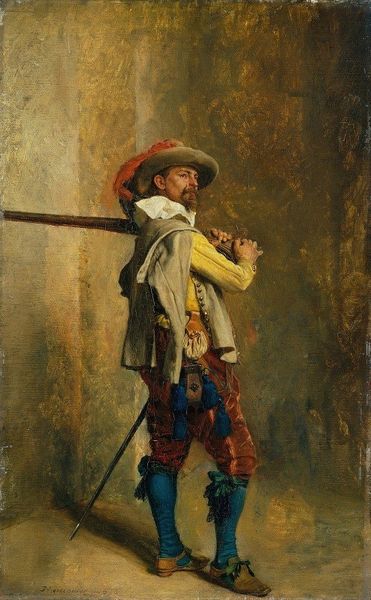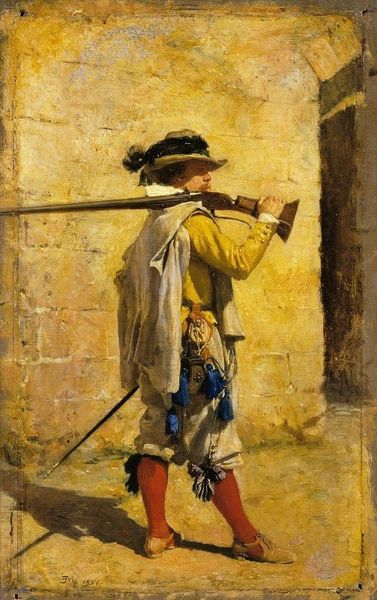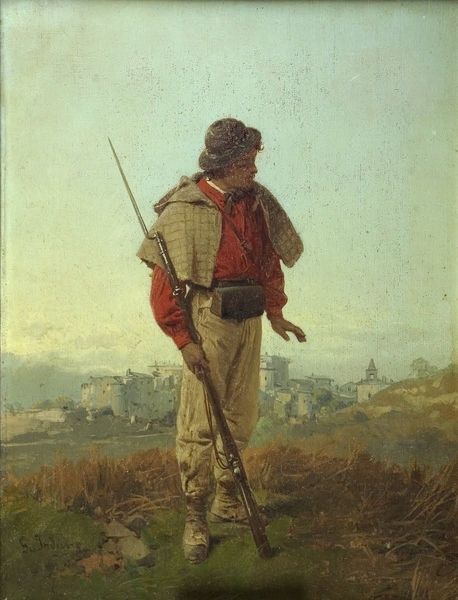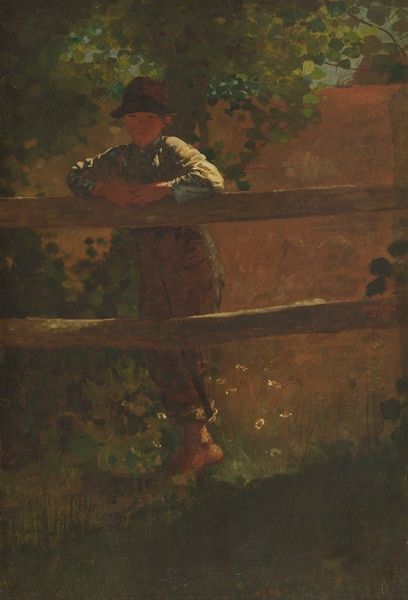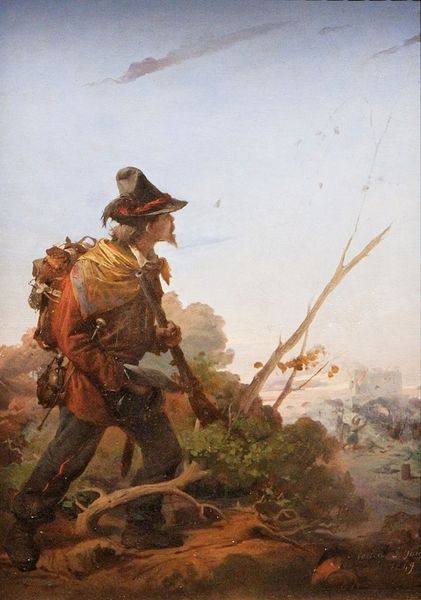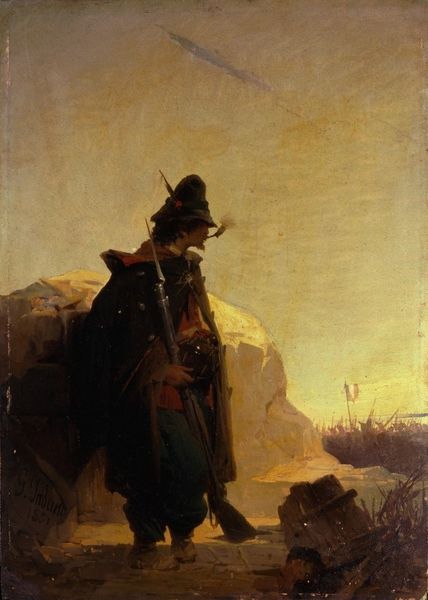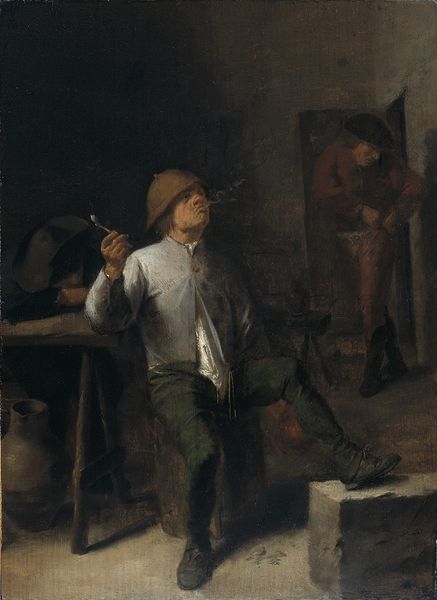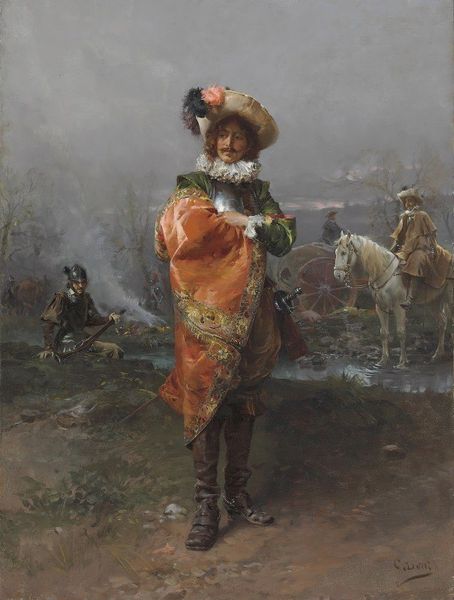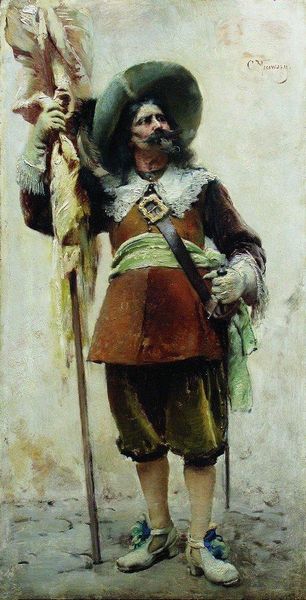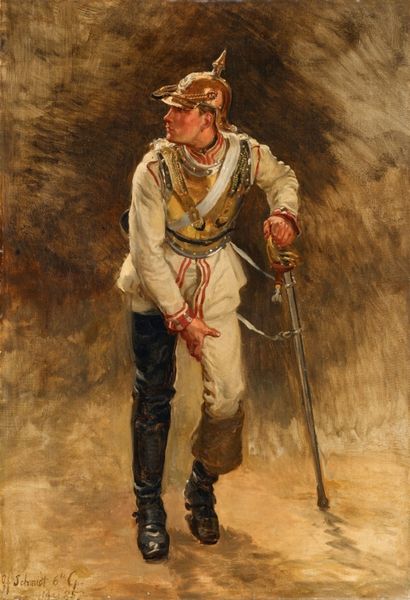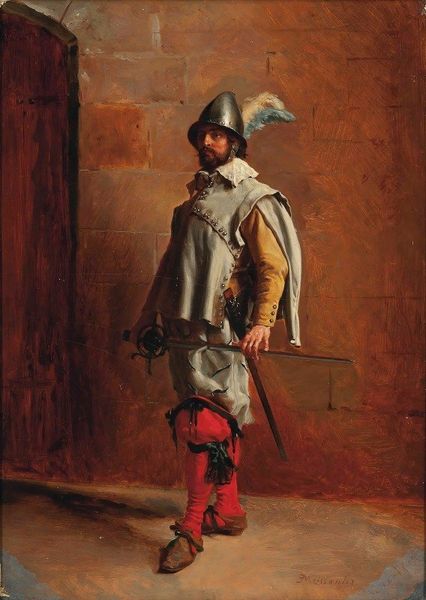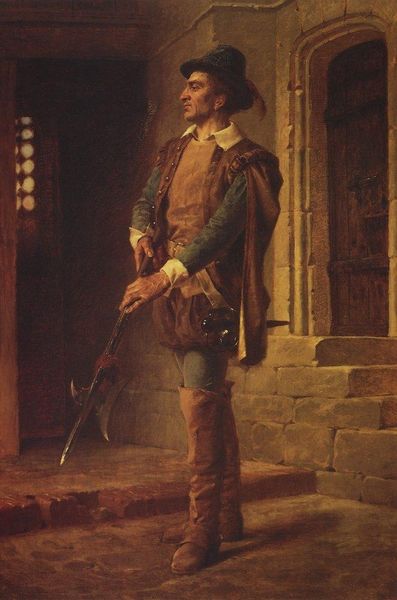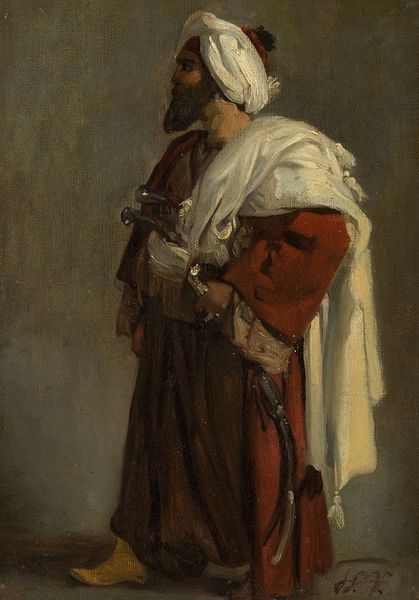
Copyright: Public Domain: Artvee
Editor: So, here we have "On a Terrace" painted by Ernest Meissonier in 1867, created with oil paint. The detail in this piece is amazing, particularly the brickwork, and the outfit. What strikes you about this artwork? Curator: I’m drawn to the production and consumption aspects here. This work epitomizes a specific market demand for meticulously crafted historical genre scenes. Consider the labor involved—the painstaking layering of paint to achieve that level of realism in the bricks, the figure’s costume. This isn’t just art; it's a commodity manufactured to appeal to a particular, bourgeois taste. What kind of patronage would drive this meticulousness? Editor: That’s a great point, the details almost feel photographic! Is this painting reflecting or constructing something about the cultural views of the time? Curator: I think it does both. The romanticized portrayal of historical figures taps into a longing for a glorified past. But look closely – is there any actual dirt or wear-and-tear? Or is the focus the impeccable clothes and precise military attire? Where is labor reflected in this man? Editor: Not really, it’s definitely idealized. You’ve made me consider that maybe the *labor* isn’t in the subject depicted but within the means of *production* by Meissonier, and that is exactly the product! Thanks, I didn't quite look at it from that viewpoint. Curator: Exactly! It forces us to re-evaluate these traditional skillsets. Consider that “high art” involved so much *artisanal labor*. What’s changed in art production, and how is that valued in contemporary works?
Comments
No comments
Be the first to comment and join the conversation on the ultimate creative platform.
